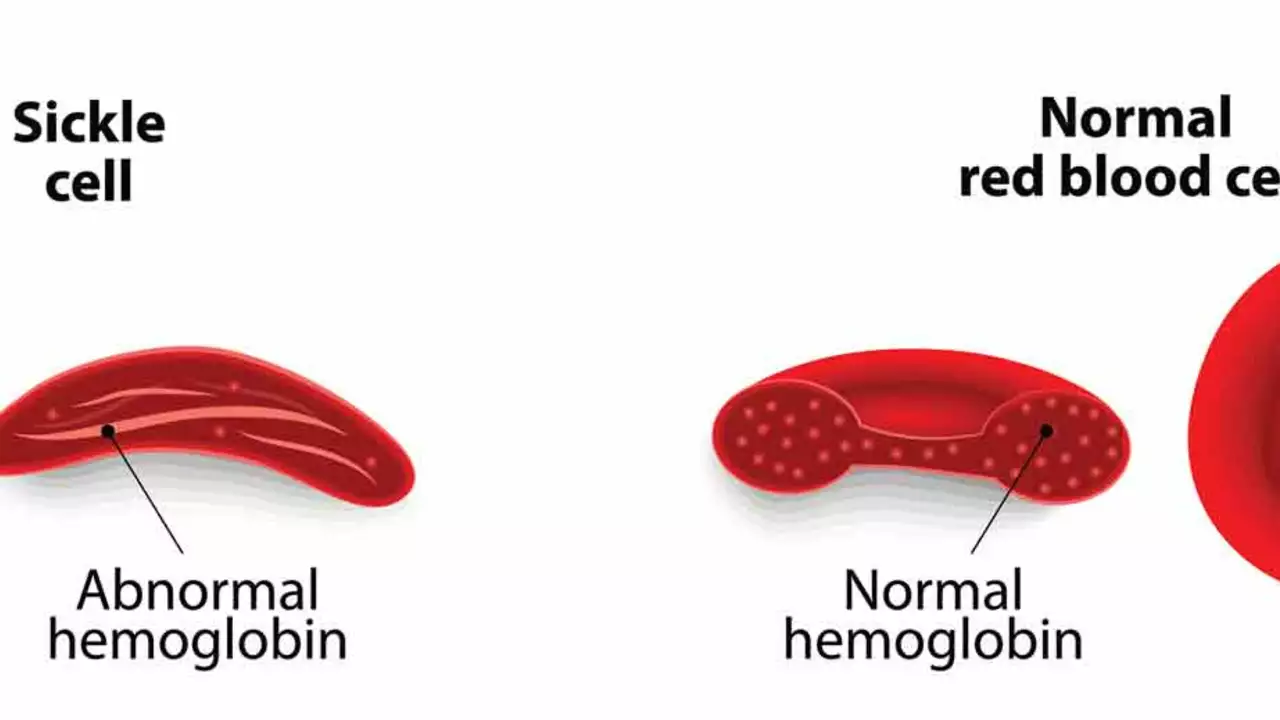Sickle Cell Anemia: Understanding the Basics and Managing Your Health
If you've heard of sickle cell anemia but aren't sure what it really means, you're in the right place. Sickle cell anemia is a blood disorder where red blood cells become misshapen, looking like a sickle or crescent shape. These odd-shaped cells don’t travel through blood vessels easily, often causing blockages and reducing oxygen flow, leading to pain and fatigue.
Symptoms pop up early in life and include episodes of severe pain, called sickle cell crises, frequent infections, and delayed growth. You might notice dark urine and yellowing of the skin or eyes too. Because sickle cells break down faster than normal red blood cells, anemia develops, leading to tiredness and weakness.
What Causes Sickle Cell Anemia?
This condition is inherited from your parents. It happens when you get two faulty genes—one from each parent—that tell your body to produce the abnormal hemoglobin that makes red blood cells sickle-shaped. If you only inherit one gene, you may have sickle cell trait, which usually doesn’t show symptoms but can still affect your health sometimes.
Understanding your family history matters here. Knowing if sickle cell runs in your family can help you make informed decisions, especially if you’re planning to have children. Genetic testing can provide clear answers and guide you on next steps.
How to Manage and Live Well with Sickle Cell Anemia
Managing sickle cell anemia is about reducing pain and preventing complications. Staying hydrated is crucial—drinking plenty of water helps keep those cells from clogging up blood flow. Avoiding extreme temperatures and high altitudes can also lower your chances of a painful crisis.
Doctors often recommend medications like hydroxyurea to help reduce the frequency of painful episodes and the need for blood transfusions. Regular check-ups to monitor your health and prompt care for infections are important. Vaccines are a must since sickle cell patients are more vulnerable to infections.
Living with sickle cell means paying attention to your body and recognizing when symptoms worsen. Support from healthcare providers, family, and patient communities makes a big difference. New treatments and research offer hope, but staying proactive with daily care is key.
Remember, sickle cell anemia is manageable with the right information and support. If you or someone you love is dealing with it, keep learning and reach out to health professionals who can guide you on this journey.

Sickle Cell Anemia and Exercise: Finding the Right Balance for Your Health
Hey there, fitness enthusiasts! I've been diving headfirst into the world of Sickle Cell Anemia and how it relates to our beloved sweat sessions. Did you know it's a bit like running a marathon while juggling flaming torches? You've got to nail the perfect balance. Too much exercise can cause a sickle cell crisis, but too little doesn't help our bodies stay strong and healthy. So, we've got to tread that fine line, like a tightrope walking squirrel, ensuring we're safe while still reaping the benefits of exercise. And remember, folks, the goal here is to wear lycra for fun, not hospital gowns!
Read More